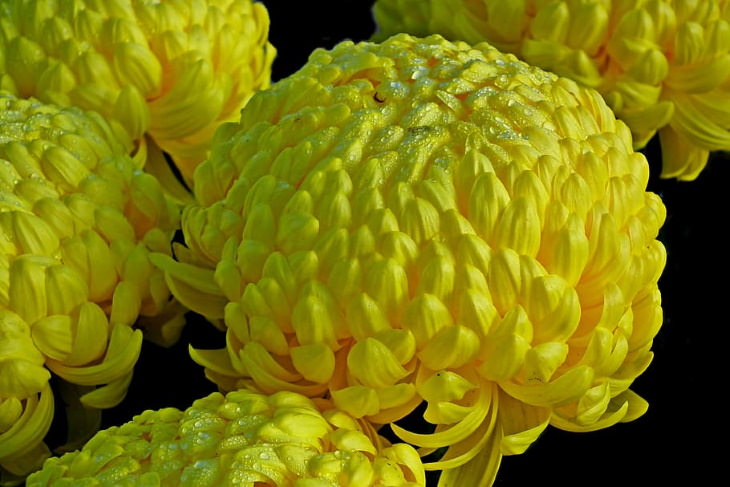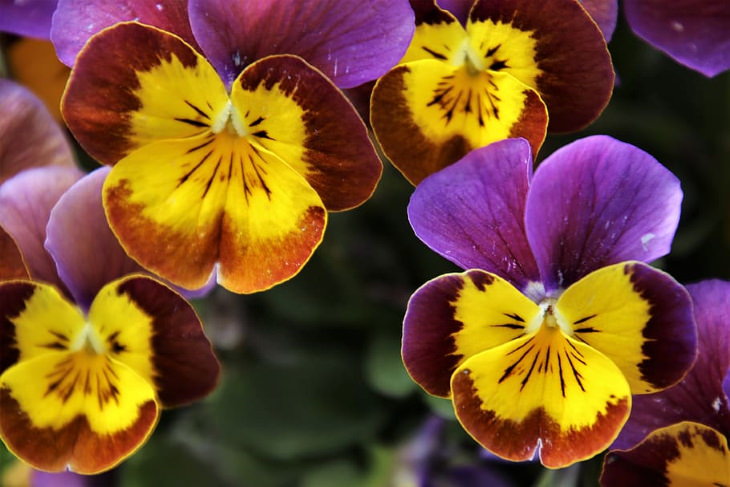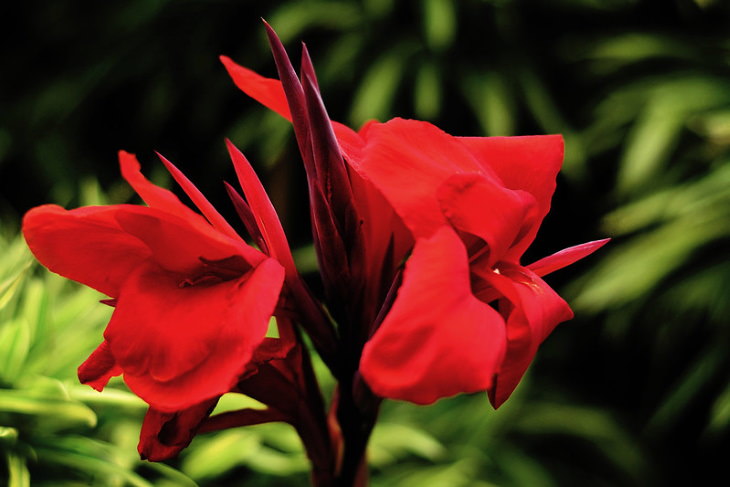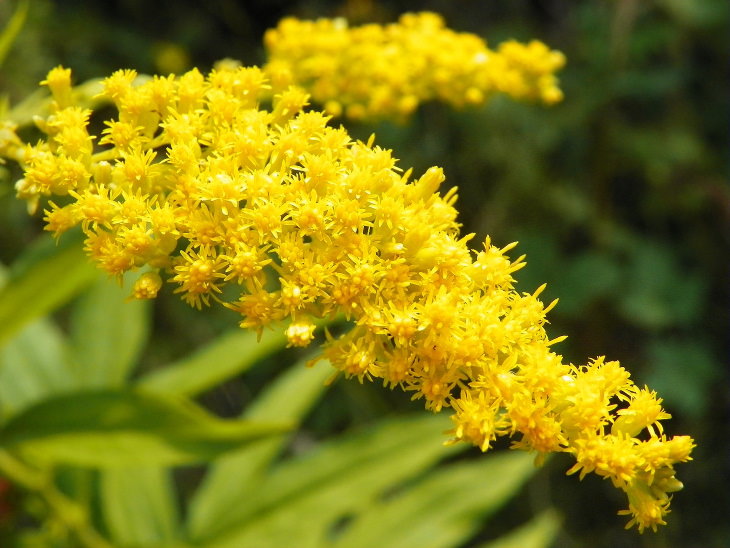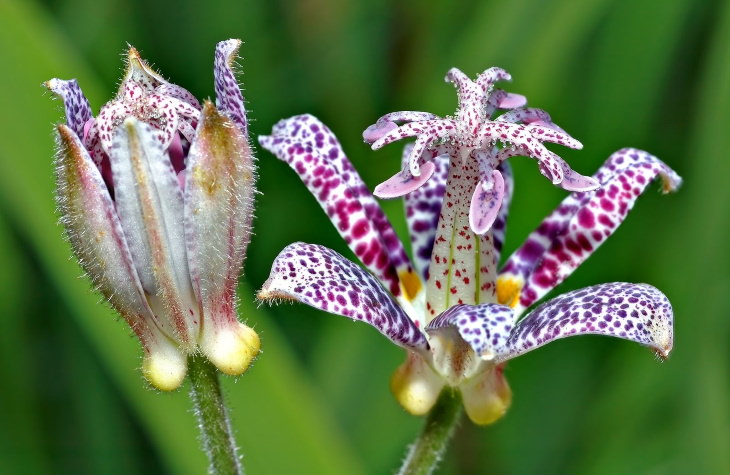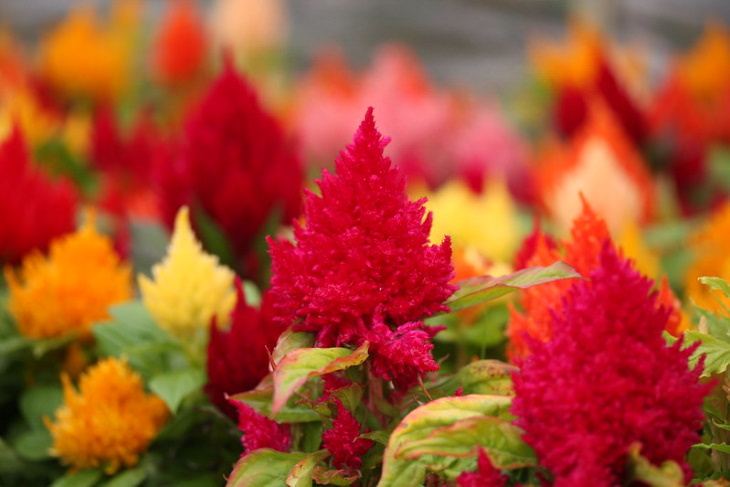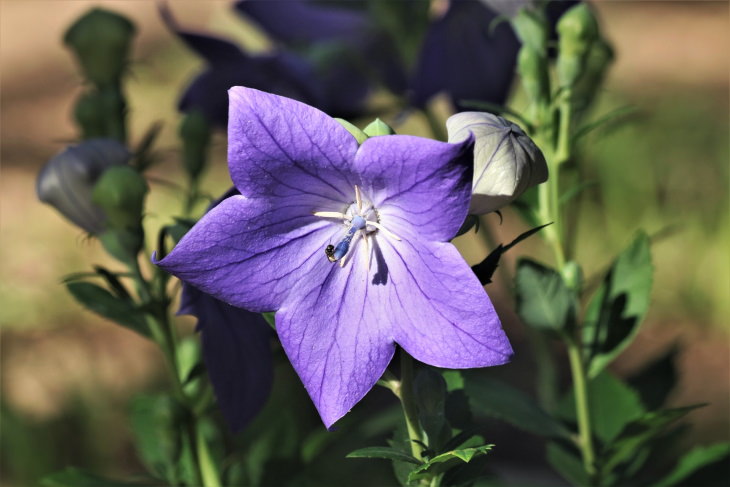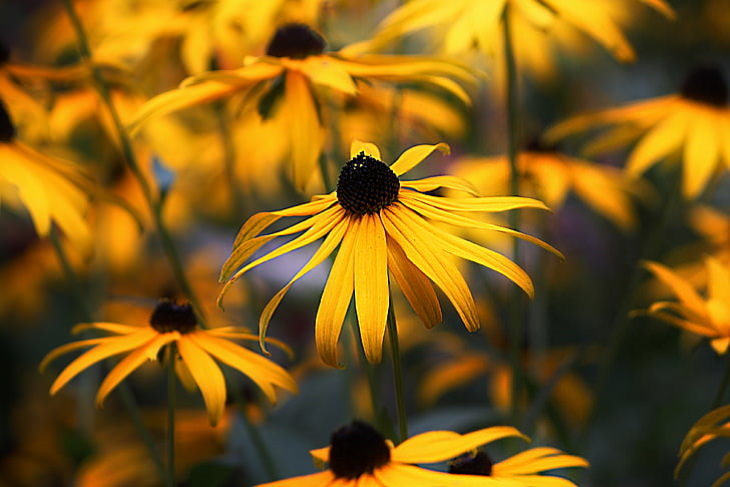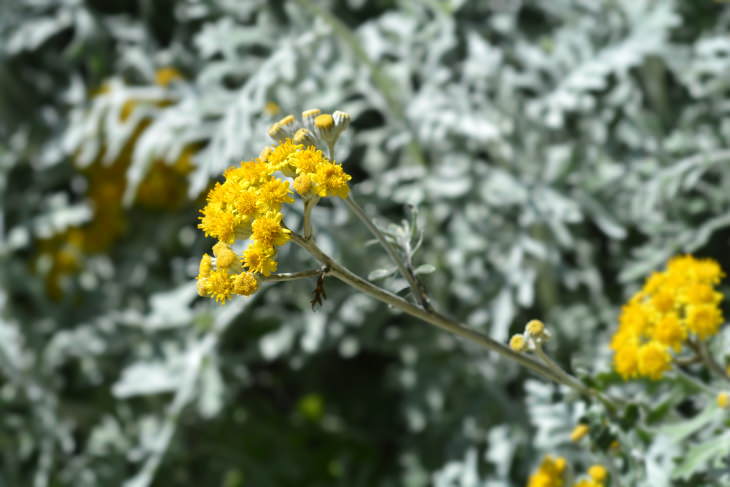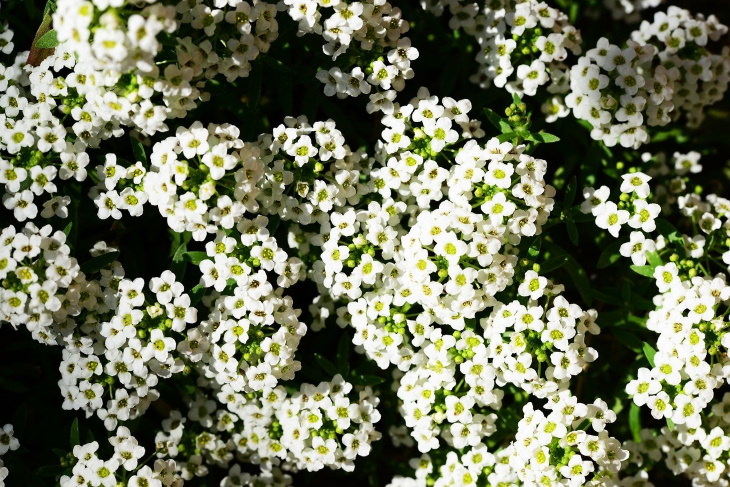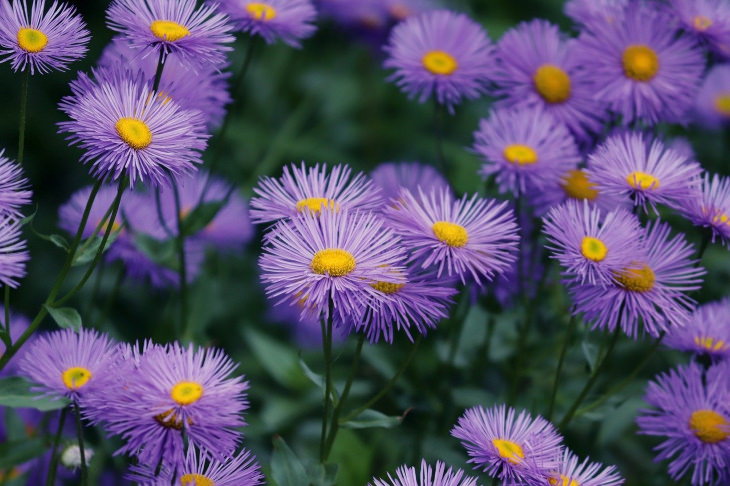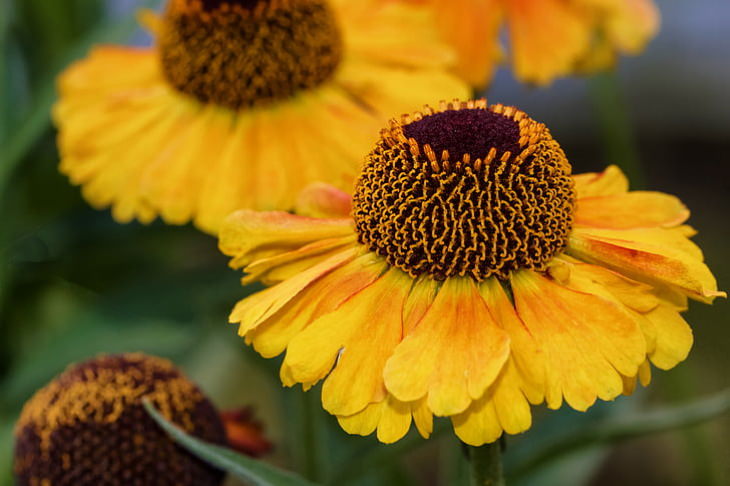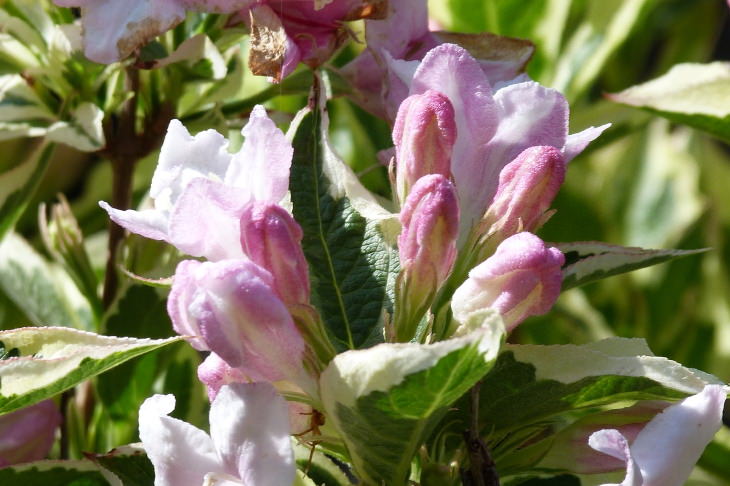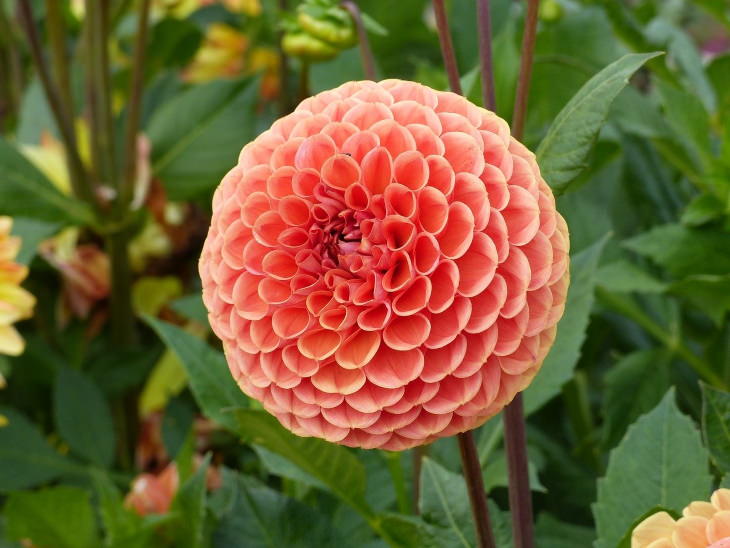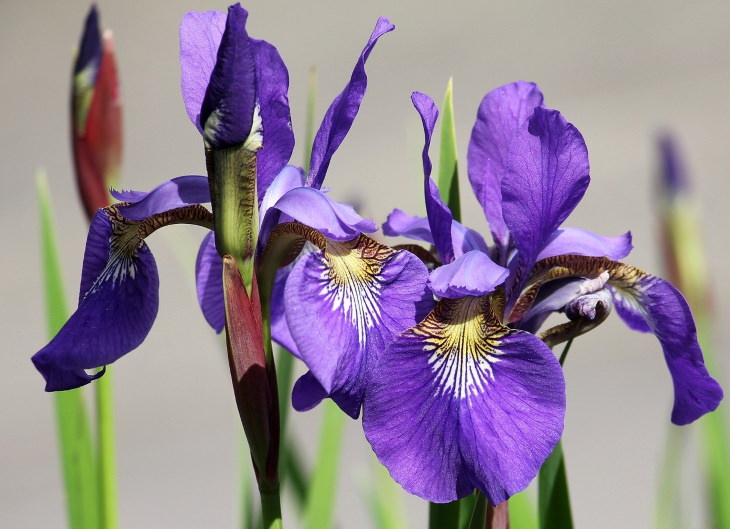1. Chrysanthemum
Chrysanthemums are the quintessential autumn flower. These flowers are loved all around the world, but they have a special place in Japanese culture, where the chrysanthemum is the national flower. There’s even an entire festival celebrated in September that honors the chrysanthemum and shows a great variety of their blooms.
For those who want to experience the beauty of these stunning flowers next fall, now is the best time to plant hardier perennial mums, of which there are dozens of colorful varieties. For the rest of us - it’s the best time to purchase a beautiful bouquet of chrysanthemums or purchase an entire potted plant to admire this fall.
2. Pansies (Viola)
Pansies are instantly recognized for their bright pops of color and heart-shaped velvety petals. Unlike most flowers on this list, pansies are known for their fondness for shade and cool temperatures. In fact, some pansy cultivars were bred to bloom even after a light dusting of snow.
Even though these plants are actually short-blooming perennials, most people grow them as annual plants. Since these plants actually prefer cold weather and shade, you can easily plant them in August and enjoy their bloom until winter. If you leave them in the ground, they may even survive and bloom again in the spring.
3. Canna
Canna lilies are not true lilies - they’re actually closer to ginger and banana plants than lilies, genetically speaking - but their beautiful large leaves and vividly colored flowers will become the highlight of any garden. Depending on where you live, cannas can bloom until October.
But there’s a great way to enjoy the beauty of these plants year-round too - simply plant a dwarf canna variety in a pot, and move it inside in the winter. The most important thing to keep in mind when growing cannas is the amount of sun you give the plant - most cannas need 6-8 hours of sun.
4. Goldenrod (Solidago)
Goldenrod is a mildly controversial plant among plant-growers - some see it as a beautiful and easy-to-grow plant that attracts butterflies and other pollinators, but others are convinced that it’s a weed. The only real case when you should not grow this plant is if you have pollen allergies. Goldenrod plants have tall and long foliage with yellow fluffy spikes that bloom from late summer to fall. You can plant goldenrod in early fall or spring.
5. Japanese toad lily (Tricyrtis hirta)
The toad lily plant is naturally found on the cliffs and along the streams of Japan. These exquisite plants are almost too good to be true - they’re hardy perennials that can happily withstand both cold weather and the dry heat of late August and early fall. Plant these beautiful flowers in a shady spot in your garden and enjoy their pretty spotted white or purple flowers, no fertilization or extra care is necessary.
6. Cockscomb (Celosia)
If you’re looking for a brightly colored plant that really stands out in any garden, Celosias are the way to go. Celosia blooms can be shaped as velvety or fluffy crests that grow on top of the plant in a range of colors from maroon, pink, and purple to red, orange, or even white. Cockscomb blooms continuously from late summer to fall, and it will survive until the first frost. If you want to save or use up cockscomb flowers, it’s possible to promote further growth by pruning the flowers.
7. Balloon flower (Platycodon grandiflorus)
These dainty purplish-blue flowers come from East Asia. The balloon flower gets its name from the shape of its blooms before they blossom, which are shaped just like a hot air balloon. There are also white and pink varieties of balloon flowers available. This plant loves a sunny spot, but it can also survive in partial shade.
8. Coneflowers (Rudbeckia)
These large yellow flowers that resemble daisies are among the easiest to grow in summer and fall. There are many types of rudbeckia out there, but the black-eyed Susan is easily the most common variety, mainly because it grows so fast and blooms for a long time.
Pick the brightest spot in your garden for your coneflowers, as they benefit from full sun. Even though most rudbeckias are not perennial in cooler climates, many are self-seeding, so you will watch them return the next year.
9. Silver ragwort (Jacobaea maritima)
This plant is also known under the pretty cool names ‘silver dust’ and ‘dusty Miller,’ and it is well known for its velvety silver foliage. The unique-looking plant usually blooms tiny yellow flowers in late summer, but many varieties are actually perennial, especially in warmer climates, so don’t get rid of it in late fall - you might be surprised to see it revive in the spring.
10. Alyssum
If you want to cover your garden or container garden with a dense and lush carpet of flowers, you can’t go wrong with alyssum. The flowers are available in white and purple, and they will bloom both in the spring and fall. Alyssum prefers the cool season, and it will grow throughout the winter too in warmer climates. Alyssum is a perennial, so you can expect it to reappear in spring even in cooler climates.
11. Asters
The daisy-like purple, pink, and white blooms of asters usually appear in late August to early September, and they attract pollinators immediately. The best time to plant this perennial flower is either spring or early fall when the weather isn’t too hot. It’s best to plant asters in full sun - you can confidently plant them at the perimeter of your garden, as these plants also repel deer.
12. Sneezeweed (Helenium)
If you suffer from allergies, don’t worry about planting heleniums - the name "sneezeweed" is derived from the use of these plants as an ingredient of snuff in the past. These plants are distant relatives of asters, with which they have another commonality - sneezeweed, too, repels deer and rabbits. The pretty perennial flower resembles coneflowers or sunflowers and blooms in the fall.
13. Turtleheads (Chelone obliqua)
Turtleheads are native North American wildflowers that bloom just now - at the end of summer and the beginning of fall. It’s easy to understand how these plants got their names - their pink, purple, and white blossoms do indeed resemble a turtle’s beak. Plant turtleheads in partial shade, water them abundantly, and they’ll happily grow in your garden for years.
14. Dahlia
The striking dahlia is a closer relative to other beloved flowering plants, such as chrysanthemums, daisies, and sunflowers. The massive blooms of dahlias appear in late summer to fall, and they come in every color and shape you can imagine. Surprisingly, most dahlias grow just about everywhere, so they’re quite low-maintenance.
Make sure to dig up the dahlia tubers in late fall if you live in a cooler climate are replant them in spring to enjoy these flowers year after year. Dahlias are perennial in warm climates.
15. Iris
The name "iris" comes from the Greek word for "rainbow," which is a very appropriate way to describe a genus of 250-300 species of plants that come in every color and shape you can imagine. Virtually every part of the world has its own type of iris - there are varieties that come from North America, Japan, the Mediterranean, and even Siberia - so you know you’ll be able to find an iris plant that will grow beautifully where you live.
Irises are hardy perennials that tolerate full sun but prefer partial shade. The best time to plant irises is in early fall, and you’ll watch them re-emerge from the ground and bloom in early spring.
Share this article with other plant lovers!

